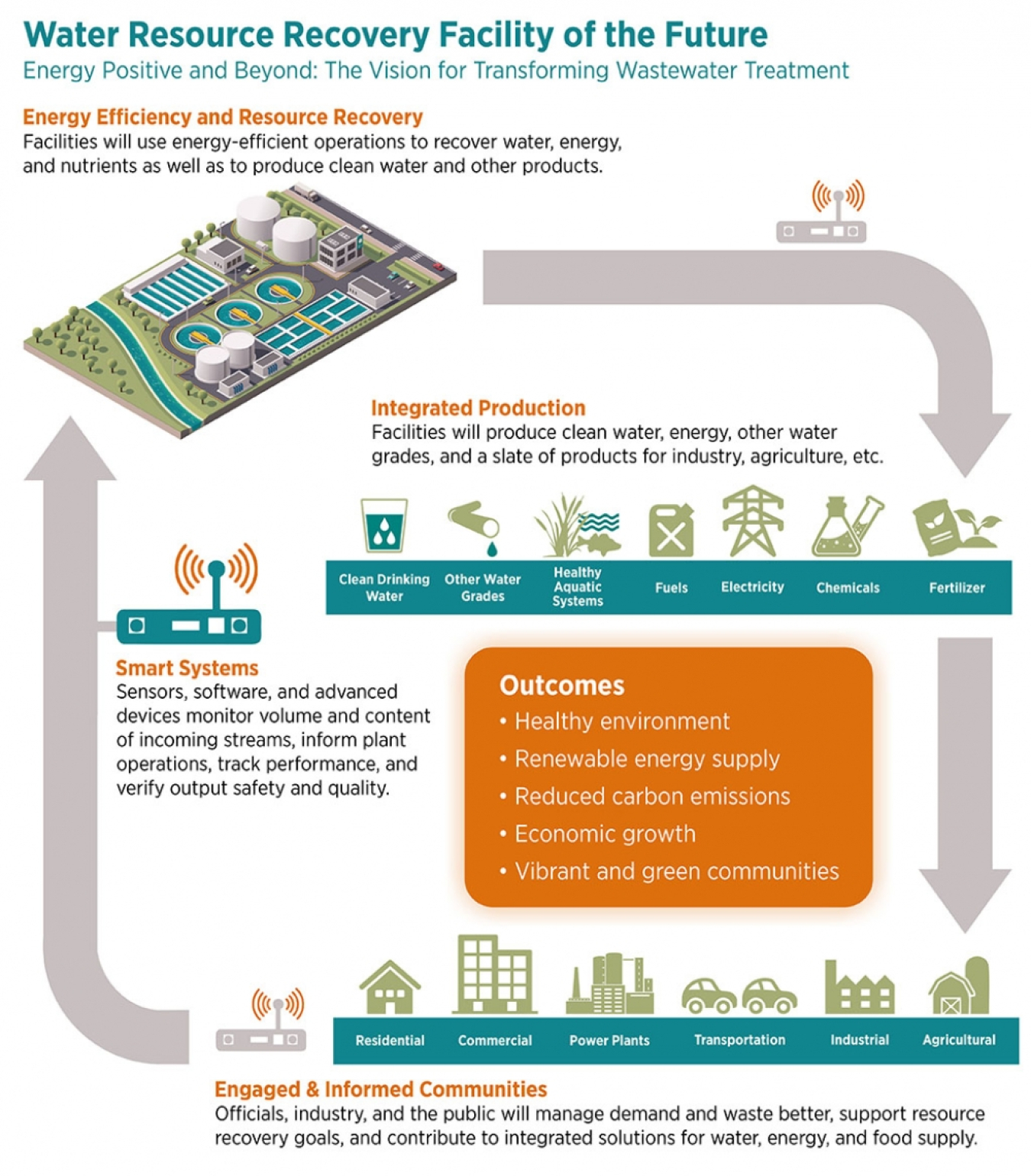A new report from a workshop held jointly by the U.S. Department of Energy (DOE), the U.S. Environmental Protection Agency (EPA), and the National Science Foundation (NSF) outlines a range of research and actions needed to transform today’s water tre...
November 3, 2015
A new report from a workshop held jointly by the U.S. Department of Energy (DOE), the U.S. Environmental Protection Agency (EPA), and the National Science Foundation (NSF) outlines a range of research and actions needed to transform today’s water treatment plants into water resource recovery facilities. These water resource recovery facilities would produce not only clean drinking water, but also biofuels, chemicals, and other water grades for specific uses, like agriculture. The report summarizes discussions and ideas presented at the Energy-Positive Water Resource Recovery Workshop, held by the three agencies in April 2015. DOE’s Bioenergy Technologies Office, along with DOE’s Office of Energy Policy and Systems Analysis, NSF, and EPA, provided funding for the workshop, and other DOE Office of Energy Efficiency and Renewable Energy offices assisted in workshop planning.
Wastewater treatment facilities, pipes, and related infrastructure in cities around the country are approaching the end of their expected service life. According to EPA, the infrastructure will require funding of about $600 billion over the next 20 years if it is to continue reliably transporting and treating wastewater and delivering clean drinking water. A unique window of opportunity exists to apply new knowledge and technology to create an industry shift, from wastewater treatment to wastewater resource recovery. Such a shift offers the potential to reduce the financial burdens on municipalities, decrease stress on energy systems, cut air and water pollution, improve system resiliency to climate impacts, and support local economic activity.
At the workshop, experts from industry, academia, national laboratories, and government determined that wastewater resource recovery facilities should perform four major types of functions (see infographic): (1) efficiently recover the resources in wastewater, (2) integrate production with other utilities, (3) engage and inform stakeholders, and (4) run smart systems.
The experts also discussed challenges, including regulatory, technical, social, and financial barriers—all which must be overcome to enable wide-scale transition to energy-positive water resource recovery facilities. Finally, the experts identified research opportunities that could produce or significantly advance the needed technology.
The sponsoring agencies intend this report to stimulate further dialogue and accelerate the wide-scale advent of advanced water resource recovery facilities. The agencies are already addressing one frequent suggestion at the workshop by identifying facilities to serve as potential test beds for new technologies. DOE, EPA, and NSF are cooperating with the Water Environment Research Foundation to develop a National Water Resource Recovery Test Bed Network and Facility Directory.
The report and presentations from the workshop, which was held at the National Science Foundation headquarters in Arlington, Virginia, on April 28–29, 2015, are now available.

